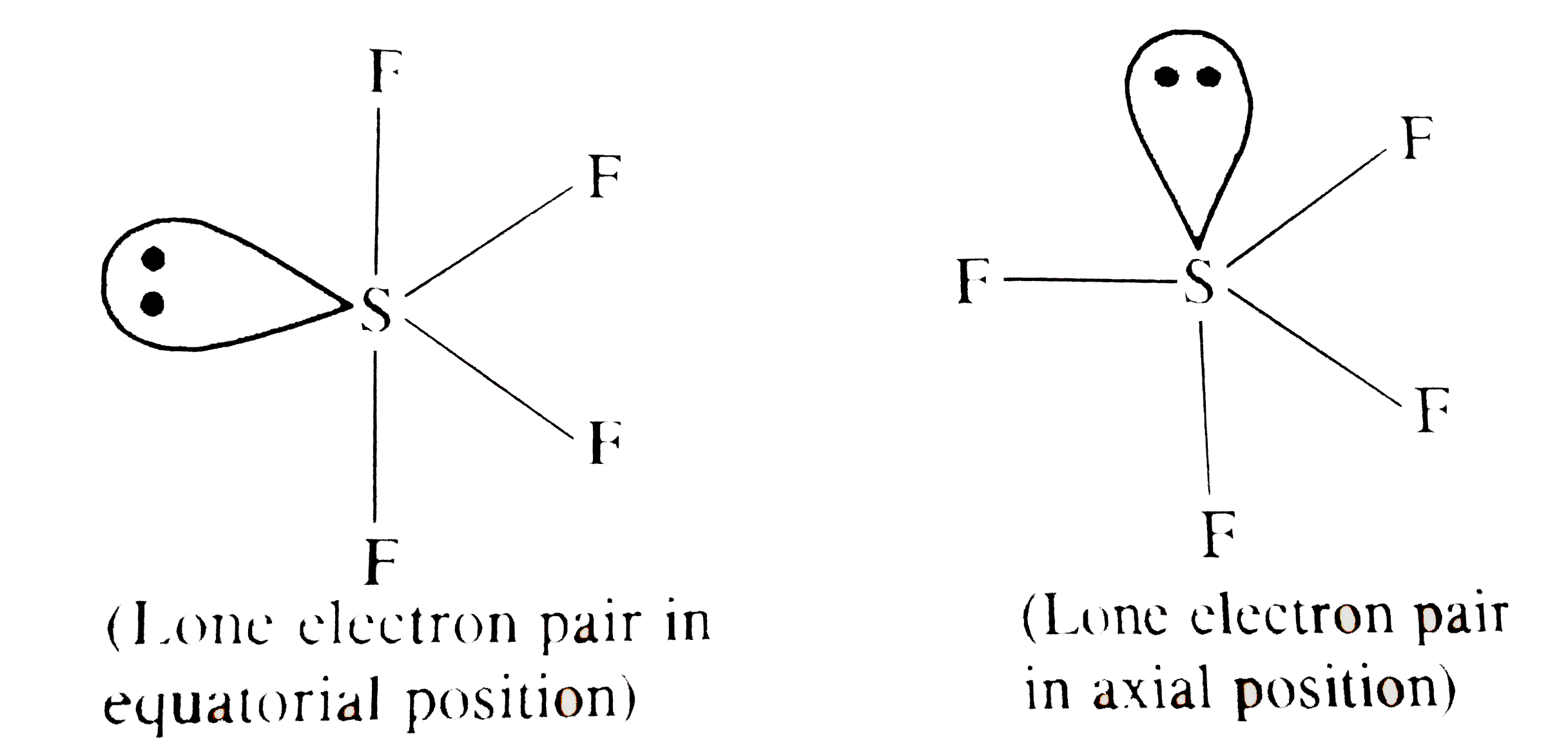Why is that in the SF4 molecule, the lone pair of electrons occupies an equatorial position in the overall trigonal pyramidal arrangement in preference to an axial position ?

In equatorial position, the lone electron pair is experiencing repulsion from two shared pairs of electrons at right angle to it while in the axial position, it is repelled by three shared electron pairs at tight angle to it. In order to minimuse the replusion, the lone electron pair must be present in the equatorial position and not in the axial position.
Similar Questions
Why is that in the SF4 molecule, the lone pair of electrons occupies an equatorial position in the overall trigonal bipyramidal arrangement in preferencr to an axial position ?
View SolutionIn BrF3 molecule, the lone pair occupies equatorial position minimize
View SolutionIn ClF3, lone pair of electrons is present at equatorial position to minimize :
View SolutionValence shell electron pair repulsion theory (VSEPR) provides a method for predicting the shape of molecules, based on the electron pair electrostatic repulsion.According to VSEPR model, molecules adopt geometries in which their valence electron pairs position themselves as far from each other as possible.The VSEPR model consider double and triple bonds to have slightly greater repulsive effects than single bonds because of the repulsive effect of π electrons.how ever, the lone pair creates the maximum repulsive effect.
Which of the following does not represent the isostructural pair ?
View SolutionWrite the geometry of XeF4andSOF4 and clearly indicate the position of lone pair of electrons and hybridization of the central atom.
View SolutionA molecule XY2 contains two σ, two π and one lone pair of electron in valence shell of X. The arrangement of lone pair as well as bond pairs is
View SolutionThe resonance effect is defined as 'the polarity produced in the molecule by the interaction of two π-bonds or between a π-bond and lone pair of electrons present on an adjacentatom.' The effect is transmitted through the chain.
In positive resonance effect, the transfer of electrons is away from an atom or substituent group attached to the conjugated system. This electron displacement makes certain positions in the molecule of high electron densities. In negative resonance effect, the transfer of electrons is towards the atom or substituent group attached to the conjugated system.
Which of the following intermediates is pyramidal in shape ?
View SolutionThe resonance effect is defined as 'the polarity produced in the molecule by the interaction of two π-bonds or between a π-bond and lone pair of electrons present on an adjacentatom.' The effect is transmitted through the chain.
In positive resonance effect, the transfer of electrons is away from an atom or substituent group attached to the conjugated system. This electron displacement makes certain positions in the molecule of high electron densities. In negative resonance effect, the transfer of electrons is towards the atom or substituent group attached to the conjugated system.
Which of the following does not show resonance effect ?
View SolutionThe resonance effect is defined as 'the polarity produced in the molecule by the interaction of two π-bonds or between a π-bond and lone pair of electrons present on an adjacentatom.' The effect is transmitted through the chain.
In positive resonance effect, the transfer of electrons is away from an atom or substituent group attached to the conjugated system. This electron displacement makes certain positions in the molecule of high electron densities. In negative resonance effect, the transfer of electrons is towards the atom or substituent group attached to the conjugated system.
Which of the following shows +M effect ?
View SolutionThe resonance effect is defined as 'the polarity produced in the molecule by the interaction of two π-bonds or between a π-bond and lone pair of electrons present on an adjacentatom.' The effect is transmitted through the chain.
In positive resonance effect, the transfer of electrons is away from an atom or substituent group attached to the conjugated system. This electron displacement makes certain positions in the molecule of high electron densities. In negative resonance effect, the transfer of electrons is towards the atom or substituent group attached to the conjugated system.
Which of the following carboxylate ions is the most stable ?
View Solution
